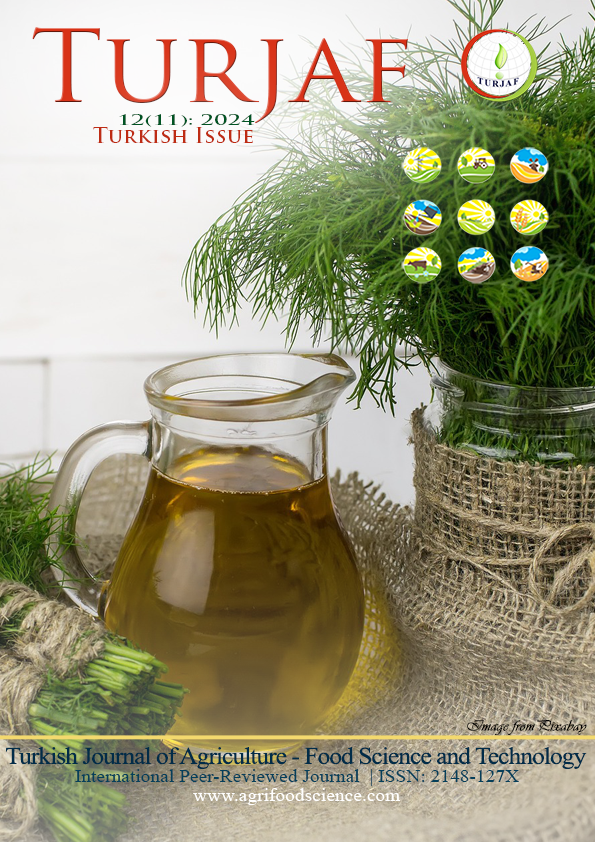Analysis of Silos with Varying Wall Thicknesses Using the Finite Element Method (FEM) and Optimization of Structural Weight
DOI:
https://doi.org/10.24925/turjaf.v12i11.1930-1937.7060Keywords:
steel silo, optimization, resource efficiency, design, static analysisAbstract
In this study, 85 silo models with varying sheet thicknesses and support elements were created for grain storage. The silo dimensions were fixed at a diameter of 4.77 meters and a height of 10.5 meters (excluding the roof) by using 1500×3000 mm steel sheets without cutting. The main goal of this study is to optimize the silos to reduce costs by minimizing the amount of structural material, which constitutes a significant portion of the overall cost of steel silos. St44 structural steel was chosen as the material for its weldability, machinability, and cost-effectiveness. To enhance the stability of the silo and minimize potential structural issues, NPU and flat bar support elements were incorporated into the design. The structural analyses of the silo models were carried out using ANSYS finite element software. In the analyses performed with ANSYS, the total deformation, strain, and stress values under static loading conditions were calculated for each silo model. Additionally, the total weight of each design was evaluated. By comparing the data obtained from these analyses, the optimal silo design that offers the best performance and cost balance was determined. It was found that the overall weight could be reduced by 58% by using sufficient support elements without increasing the thickness of the steel sheets during manufacturing. This finding significantly reduces material costs during production and offers an economical solution while maintaining structural performance.
References
Abdelbarr, M. H., Ramadan, O. M., Hilal, A., Sanad, A. M., & Abdalla, H. A. (2024). Current design of rectangular steel silos: limitations and improvement. Journal of Engineering and Applied Science, 71(1), 77.
Anil, N. E., & Lakshmi, P. (2022). Comparative study of finite element analysis of steel silos with rectangular and Istiffeners. Sustainability, Agri, Food and Environmental Research, 10, 1-9.
ANSYS Inc. (2024). ANSYS Mechanical User’s Guide.
Çelik, A. İ., & Kose, M. M. (2020). Çelik Tahıl Depolama Silolarının Sismik Analizi Üzerine Genel Bir Değerlendirme Ve Yeni Analiz Yaklaşımları. Mühendislik Bilimleri ve Tasarım Dergisi, 8(2), 501-520.
Efe, M. E., & Çelik, D. (2020). Rijitleştirme Levhaları ile Güçlendirilmiş Silindirik Çelik Siloların Yapısal Davranışının İncelenmesi. Bilecik Şeyh Edebali Üniversitesi Fen Bilimleri Dergisi, 7(2), 1124-1139.
Efe, M. E. (2020). Hidrodinamik Etki Altındaki Silo Tipi Çelik Yapıların Sıvı Çalkantısına Bağlı Yapısal Davranışın İncelenmesi (Yüksek Lisans Tezi). Süleyman Demirel Üniversitesi, Fen Bilimleri Enstitüsü, İnşaat Mühendisliği.
Fawzy, M. A., Adel, A., & Shawky, M. M. (2021, August). Case Study: Numerical Analysis of Collapsed Steel Tower Silo to Quantify the Design Safety Factors. In The International Undergraduate Research Conference (Vol. 5, No. 5, pp. 219-227). The Military Technical College.
Gallego, E., Goodey, R. J., Ayuga, F., & Brown, C. J. (2004). Some practical features in modelling silos with finite elements. ASABE Meeting Presentation Paper No. 044150.
Gandia, R. M., Gomes, F. C., de Paula, W. C., & Aguado, P. J. R. (2021). Influence of specific weight and wall friction coefficient on normal pressures in silos using the Finite Element Method. Revista Engenharia na Agricultura-REVENG, 29(Contínua), 192-203.
Juan, A., Moran, J.M., Guerra, M.I., Couto, A., Ayuga, F., & Aguado, P.J. (2006). Establishing stress state of cylindrical metal silos using finite element method: Comparison with ENV 1993. Thin-Walled Structures, 44, 1192-1200.
Kibar, H. (2011). Tombul Fındık Depolamasında Tane Özelliklerine Bağlı Olarak ANSYS Programıyla Optimum Silo Tasarımı. OMÜ. Fen Bilimleri Enstitüsü, Yayınlanmamış Doktora Tezi, Samsun.
Kibar, H. (2020). Farklı Cidar Kalınlıklarına Sahip Buğday Silosunda Doldurma ve Boşaltma Koşullarına Bağlı Olarak Gerilme Dağılımının Simülasyonu. Uluslararası Tarım ve Yaban Hayatı Bilimleri Dergisi, 6(3), 517-537.
Özel, K. (2007). Çelik Hububat Silolarının Tasarım Esasları (Yüksek Lisans Tezi). Konya Selçuk Üniversitesi, Fen Bilimleri Enstitüsü.
Rehman, K. U., & Wang, K. (2023). Analysis and Design of Steel Silo using STAAD. ProV8i. Babylonian Journal of Mechanical Engineering, 2023, 20-28.
SolidWorks Corporation. (2024). SolidWorks Simulation User’s Guide.
Sondej, M., Iwicki, P., Wójcik, M., & Tejchman, J. (2016). Stability analyses of a cylindrical steel silo with corrugated sheets and columns. Steel and Composite Structures, 20(1), 147-166.
Tang, Z., Zhou, D., Peng, C., & Wu, W. (2015). The structural analysis of steel silos with cylindrical-wall bearing and profile-steel bearing. Stavební obzor-Civil Engineering Journal, 24(2).
Warayth, M. O. M. (2024). Çelik siloların GFRP ile güçlendirilmesinin sonlu elemanlar metodu kullanarak incelenmesi (Yüksek Lisans Tezi). Ondokuz Mayıs Üniversitesi, Lisansüstü Eğitim Enstitüsü, İnşaat Mühendisliği Ana Bilim Dalı.
Yaldıran, F. (2018). Bir buğday silosunun ANSYS programı kullanılarak analizi (Yüksek Lisans Tezi). Karabük Üniversitesi, Fen Bilimleri Enstitüsü, Makine Mühendisliği Anabilim Dalı.
Zaccari, N., & Cudemo, M. (2016). Steel silo failure and reinforcement proposal. Engineering failure analysis, 63, 1-11.
Zhao, Y., Cao, Q. S., & Su, L. (2013). Buckling design of large circular steel silos subject to wind pressure. Thin-Walled Structures, 73, 337-349.
Downloads
Published
How to Cite
Issue
Section
License
This work is licensed under a Creative Commons Attribution-NonCommercial 4.0 International License.









